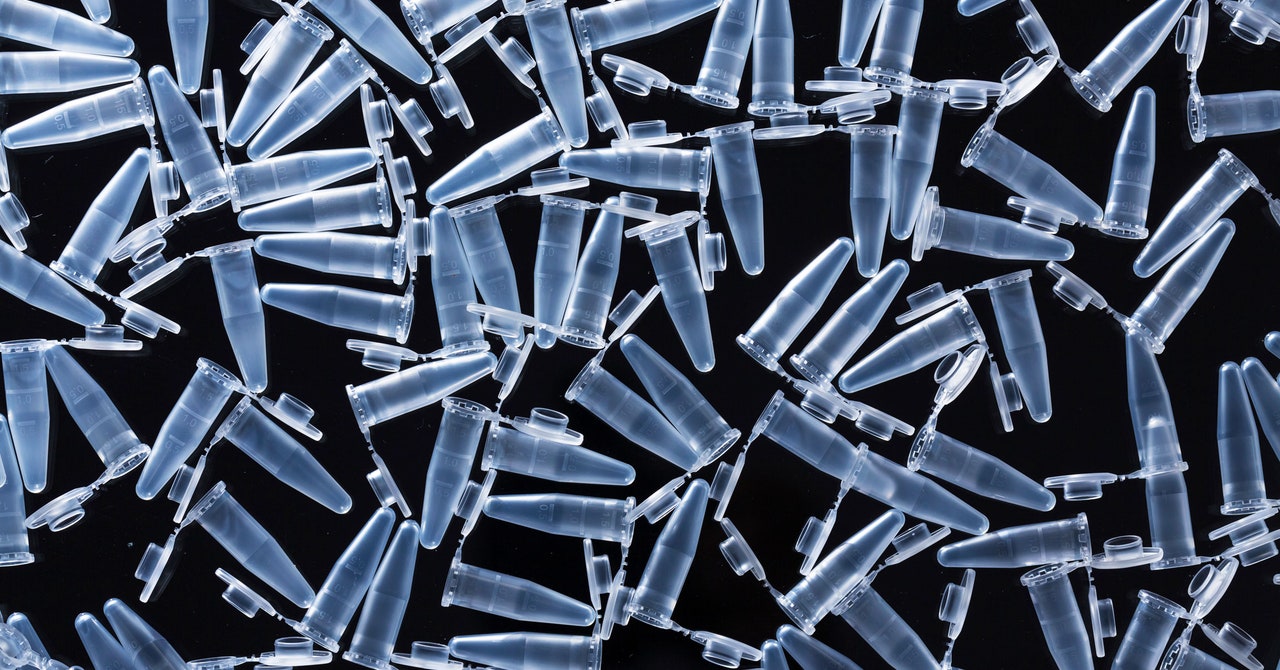Like many of the first 6.7 million Americans asked to shelter in place, Enrique Lin Shiao was spending more time than usual on Twitter. The molecular biophysicist had moved to the Bay Area in September to join Crispr luminary Jennifer Doudna’s lab at UC Berkeley. Among his projects was improving the widely used genome editing technology so that it could cut and paste long strings of DNA instead of just making simple cuts. But on March 16, local health officials ordered residents of six Bay Area counties to stay at home to prevent the further spread of Covid-19. So he stayed home, and scrolled.
Then a tweet from UC Berkeley’s Innovative Genomics Institute dropped into his timeline. “We are working as hard as possible to establish clinical #COVID19 testing capability @UCBerkeley campus,” it read, with a link to a volunteer sign-up page. Lin Shiao clicked.
When Lin Shiao showed up to the first floor of the glistening glass IGI building the next day, he wasn’t exactly sure what he was walking into. The once-cramped lab space, usually used for gene sequencing projects, was being dismantled. People Lin Shiao had never seen before unplugged machines and wheeled them away. Others carted out boxes of chemicals. Within days, it would be filled with new equipment: towering glass-encased robots, a sterile hood for working with dangerous pathogens, and—scattered across tables, desks, and the floor—test tubes of every possible shape and size. It’s here, less than two weeks later, that Lin Shiao and dozens of fellow volunteers are now getting ready to begin testing their first patient samples for Covid-19.

What Is the Coronavirus?
Plus: How can I avoid catching it? Is Covid-19 more deadly than the flu? Our in-house Know-It-Alls answer your questions.
If you’ve been following the US’s slow-motion testing trainwreck, it should be obvious why they had heeded the call: The country needs more testing. Recently, the capacity for administering tests in California has surged, especially as commercial labs like Quest Diagnostics and Lab Corps have begun taking samples. But according to official tallies, the state still has a major backlog when it comes to processing those results. As of Wednesday, 87,000 tests had been collected. But of those, more than 57,000 were still pending results. And while they wait, many of those patients are taking up space in isolation wards and disrupting hospital operations.
IGI is among several academic labs that have wasted no time booting up operations to fill the still yawning void in Covid-19 testing. Right now, California is on par with national averages, testing about one out of 1,000 people. By contrast, South Korea, which has brought its own outbreak under control using aggressive testing and contact tracing, has tested one in 170 people. But the path to opening up the state’s academic research labs to testing hasn’t been simple. How does a crew of Crispr researchers with no prior clinical diagnostic experience jump into the trenches so quickly? It requires long hours, connections with equipment suppliers, a willingness to test regulatory boundaries, and burning through lots of cash.
On March 9, after a few days idling at sea, the Grand Princess cruise ship arrived at the Port of Oakland. The ship had returned from Hawaii after infected passengers were discovered from a prior voyage—some travelers had remained and spread the virus to others. But of the more than 3,000 people on board—all at high risk of infection in the ship’s close quarters—just 46 had been tested while at sea, with 21 returning a positive result. As for the rest: Nobody knew. As the passengers went into 14 days of quarantine after they landed, Vice President Mike Pence promised all would be tested. (Due to delays, few ever were.)
As the passengers disembarked, Julia Schaletzky, head of Berkeley’s Center for Emerging and Neglected Diseases, watched the news coverage with frustration. The federal government’s testing failures were, by then, well-acknowledged. At first, the Centers for Disease Control had attempted to do all screening itself, requiring samples to be shipped to the agency’s headquarters in Atlanta—a plan scuttled by flawed tests and surging demand. Over time, starting in mid-February, the feds began slackening those rules, first by allowing state labs to conduct tests using the CDC’s kits and, later, permitting other labs with clinical certification to screen their own tests.
But to Schaletzky, the Grand Princess demonstrated that the US was still lagging far behind. Which was silly, she decided. Schaletzky, who researches vaccines, knew her university was filled with genetics equipment, including the tools needed to screen Covid-19 tests for viral RNA. (Finding the virus’ unique genetic sequence in a swab from a person’s nose or throat is sure evidence that the person has been infected.) And the campus is usually full of competent technicians and professors to do it. What UC Berkeley doesn’t have, however, is a medical school, which means it lacks a lab space with all the right certifications to handle patient samples.
On March 13, Schaletzky wrote an editorial in The Mercury News in San Jose, calling for the federal government to relax regulations

